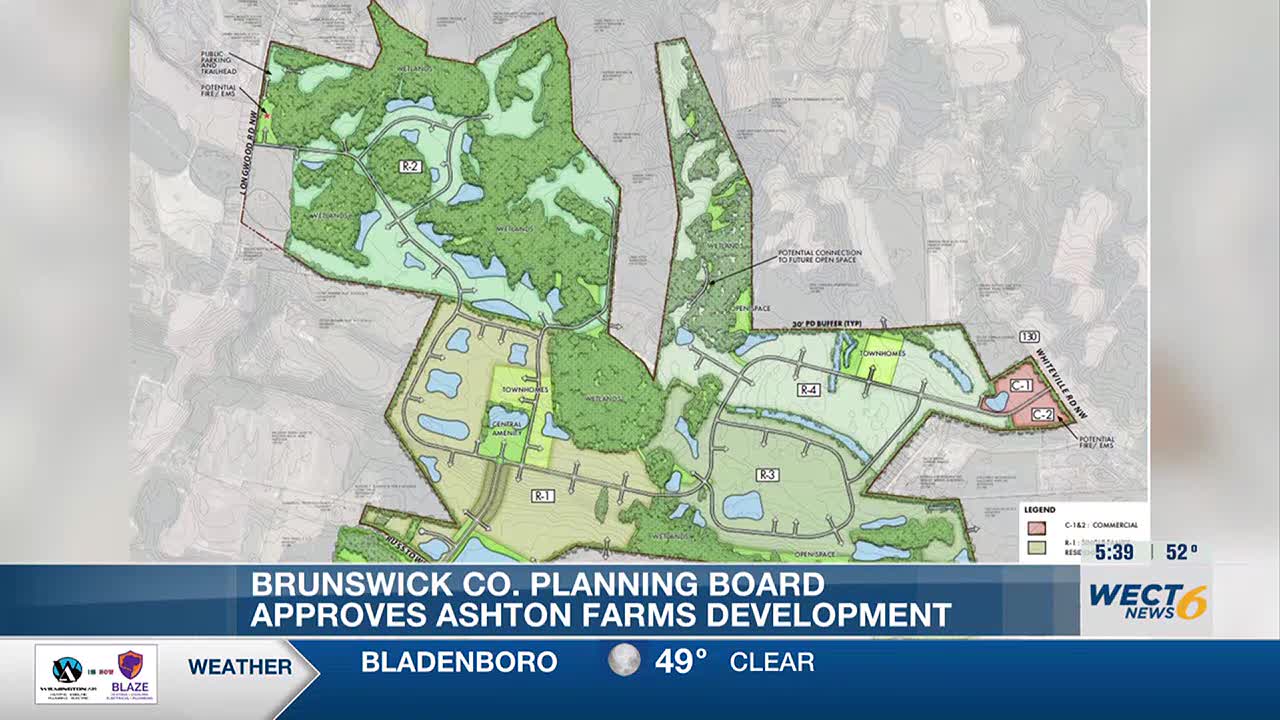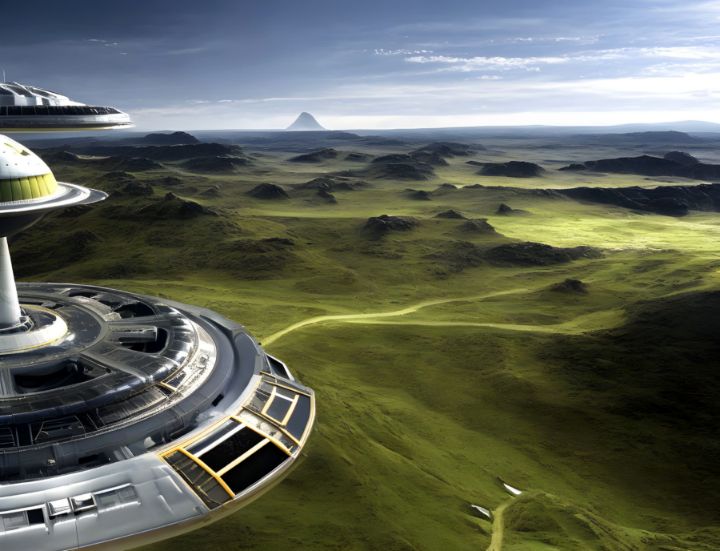Report on the Advancement of the Blue Economy in Tampa Bay and its Alignment with Sustainable Development Goals
Executive Summary
A recent assessment of the Tampa Bay region’s marine economy, prompted by a visit from former NOAA administrator Dr. Rick Spinrad, highlights significant progress and potential in aligning economic growth with global sustainability targets. The region’s initiatives, centered around the Maritime and Defense Technology Hub, demonstrate a strong commitment to the Sustainable Development Goals (SDGs), particularly SDG 14 (Life Below Water), SDG 9 (Industry, Innovation, and Infrastructure), and SDG 13 (Climate Action). Collaborative efforts are harnessing technology and strategic partnerships to build a resilient and prosperous blue economy.
Fostering Innovation and Sustainable Infrastructure: SDG 9 & SDG 14
The development of the region’s blue economy is fundamentally linked to advancements in sustainable infrastructure and innovation. The Maritime and Defense Technology Hub serves as a central pillar for these efforts, fostering collaboration and technological growth.
Key Initiatives and Developments
- The Continuum Consortium: A strategic partnership involving the St. Petersburg Innovation District, Tampa Bay Wave, and the University of South Florida’s (USF) College of Marine Science. This collaboration exemplifies SDG 17 (Partnerships for the Goals).
- NOAA Grant for Climate Resilience: The Continuum secured a $14 million NOAA grant to support and scale startups. This funding directly supports SDG 13 by pioneering environmental resiliency tools and technologies.
- Technological Integration: The “new blue economy” leverages big data, artificial intelligence, and machine learning to advance marine sectors. This focus on technology and innovation is central to achieving SDG 9.
- St. Pete Ocean Team: The reconvening of this interdisciplinary group aims to develop a strategic framework for marine-based initiatives, further strengthening the institutional capacity for sustainable ocean management (SDG 14).
Driving Economic Growth and Climate Action: SDG 8 & SDG 13
The marine economy in Tampa Bay, which generated an $8.7 billion GDP in 2021, is being reimagined to simultaneously promote economic prosperity and address climate change. This dual focus aligns with SDG 8 (Decent Work and Economic Growth) and SDG 13 (Climate Action).
Applications of the New Blue Economy
- Sustainable Energy and Food Systems: Positioning offshore wind and aquaculture farms contributes to SDG 7 (Affordable and Clean Energy) and SDG 2 (Zero Hunger).
- Efficient and Clean Transportation: Creating more efficient shipping routes reduces fuel consumption and emissions, supporting SDG 11 (Sustainable Cities and Communities) and SDG 13.
- Climate Adaptation and Resilience: Bolstering environmental resiliency and providing more accurate weather and hurricane predictions are critical for climate adaptation. Companies like Saildrone, operating from the Hub, use un-crewed ocean gliders to collect vital climate data.
- Market Creation for Climate Solutions: Dr. Spinrad noted that adaptation to climate effects is a sector now “ripe for investment,” indicating a market-driven approach to achieving climate goals.
Strengthening Partnerships, Policy, and Education: SDG 17, SDG 16, & SDG 4
Long-term success requires a foundation of strong partnerships, science-informed policy, and robust educational frameworks. The region’s approach emphasizes collaboration between public, private, academic, and government entities, a core principle of SDG 17.
Strategic Recommendations and Observations
- Science-Informed Policy: Dr. Spinrad stressed the critical need to bridge the “schism between policy and science” to ensure effective governance, a key component of SDG 16 (Peace, Justice, and Strong Institutions).
- Investment in Research and Development: A call was made to increase the national “ability to tolerate risk in investment in research” to spur innovation in areas like algae-based materials, which could replace plastics and advance SDG 12 (Responsible Consumption and Production).
- Enhancing Education and Intellectual Capital: The report highlights the importance of broad educational experiences and calls for universities to monetize intellectual property, thereby incentivizing innovation that can be applied to sustainability challenges. This supports SDG 4 (Quality Education) and SDG 9.
- Public Awareness and Data Accessibility: Leveraging publicly funded and accessible data from agencies like NOAA and NASA is crucial for empowering entrepreneurs and informing the public, which can drive policy changes that support sustainable development.
Analysis of Sustainable Development Goals in the Article
1. Which SDGs are addressed or connected to the issues highlighted in the article?
- SDG 8: Decent Work and Economic Growth – The article focuses on the “blue economy,” its economic potential, and fostering entrepreneurship to create new markets and jobs.
- SDG 9: Industry, Innovation, and Infrastructure – A central theme is the development of a technology hub, investment in research, and using technological advancements like AI and big data to build a new marine industry.
- SDG 13: Climate Action – The article explicitly mentions adapting to climate effects, building environmental resiliency, and improving hurricane forecasting as key goals of the new blue economy.
- SDG 14: Life Below Water – The entire context is the marine economy, which involves the sustainable use of ocean resources, including aquaculture, fishing, and developing new products from marine life like algae.
- SDG 17: Partnerships for the Goals – The article highlights the importance of collaboration between public, private, government, and academic sectors, as exemplified by “The Continuum” consortium and the “St. Pete Ocean Team.”
2. What specific targets under those SDGs can be identified based on the article’s content?
- SDG 8: Decent Work and Economic Growth
- Target 8.2: Achieve higher levels of economic productivity through diversification, technological upgrading and innovation. The article discusses building a “new blue economy” that “harnessing the power of big data” and “technological advancements” to move beyond traditional marine industries.
- SDG 9: Industry, Innovation, and Infrastructure
- Target 9.5: Enhance scientific research, upgrade the technological capabilities of industrial sectors. This is demonstrated by the creation of the “Maritime and Defense Technology Hub,” the “$14 million NOAA grant to support and scale startups,” and the call for greater “investment in research.”
- SDG 13: Climate Action
- Target 13.1: Strengthen resilience and adaptive capacity to climate-related hazards and natural disasters. The article directly refers to this by mentioning “adaptation to … climate effects,” efforts to “bolster environmental resiliency,” and developing “improved hurricane forecasting.”
- SDG 14: Life Below Water
- Target 14.7: By 2030, increase the economic benefits… from the sustainable use of marine resources, including through sustainable management of fisheries, aquaculture and tourism. The article quantifies the current economic benefit (“$8.7 billion gross domestic product in 2021”) and discusses expanding it through initiatives like “aquaculture farms” and farming algae.
- Target 14.a: Increase scientific knowledge, develop research capacity and transfer marine technology. This is a core theme, supported by mentions of the “Continuum” consortium, the USF College of Marine Science, and the goal to “support and scale startups that pioneer environmental resiliency tools.”
- SDG 17: Partnerships for the Goals
- Target 17.16: Enhance the global partnership for sustainable development, complemented by multi-stakeholder partnerships. The article provides a local example of this with “The Continuum, a consortium featuring the St. Petersburg Innovation District, Tampa Bay Wave and USF’s College of Marine Science.”
- Target 17.17: Encourage and promote effective public, public-private and civil society partnerships. The article describes how “Public, private, government and academic organizations” and “interdisciplinary stakeholders” are coming together to develop a strategy for the region’s blue economy.
3. Are there any indicators mentioned or implied in the article that can be used to measure progress towards the identified targets?
- Economic Value of Sustainable Marine Activities: The article explicitly states that “Tampa Bay’s marine economy generated an $8.7 billion gross domestic product in 2021.” This serves as a direct indicator for Target 14.7.
- Financial Resources for Research and Innovation: The “$14 million NOAA grant” awarded to The Continuum is a specific financial indicator measuring investment in research and innovation, relevant to Target 9.5.
- Development of New Technologies and Startups: The goal to “support and scale startups that pioneer environmental resiliency tools” implies that the number of new companies and technologies created is a key performance indicator for Targets 8.2 and 9.5.
- Formation of Multi-Stakeholder Partnerships: The creation of entities like “The Continuum” consortium and the reconvening of the “St. Pete Ocean Team” serve as indicators of progress towards Targets 17.16 and 17.17.
- Improved Climate Forecasting and Resilience Tools: The development of “improved hurricane forecasting” and “more accurate weather predictions,” enabled by companies like Saildrone, is a tangible indicator of increased adaptive capacity for Target 13.1.
- Development of Sustainable Products: The mention of farming “algae for use in biomedical products and energy production” and creating “Materials made from algae” to “replace plastic” implies that the development and market adoption of such products are indicators of a sustainable blue economy (relevant to Target 14.7).
4. Table of SDGs, Targets, and Indicators
| SDGs | Targets | Indicators Identified in the Article |
|---|---|---|
| SDG 8: Decent Work and Economic Growth | 8.2: Achieve higher levels of economic productivity through diversification, technological upgrading and innovation. | Number of startups supported and scaled through the technology hub and accelerator programs. |
| SDG 9: Industry, Innovation, and Infrastructure | 9.5: Enhance scientific research, upgrade the technological capabilities of industrial sectors. | Financial investment in research (e.g., “$14 million NOAA grant”); creation of research infrastructure (e.g., “Maritime and Defense Technology Hub”). |
| SDG 13: Climate Action | 13.1: Strengthen resilience and adaptive capacity to climate-related hazards and natural disasters. | Development of tools for “improved hurricane forecasting” and “more accurate weather predictions.” |
| SDG 14: Life Below Water | 14.7: Increase the economic benefits from the sustainable use of marine resources. | Gross domestic product from the marine economy (e.g., “$8.7 billion in 2021”); development of new markets (e.g., farming algae for bioproducts). |
| 14.a: Increase scientific knowledge, develop research capacity and transfer marine technology. | Monetization of intellectual capital from universities; transfer of data from government agencies (NOAA, NASA) to entrepreneurs. | |
| SDG 17: Partnerships for the Goals | 17.16: Enhance the multi-stakeholder partnerships. | Formation of consortiums like “The Continuum” (Innovation District, Tampa Bay Wave, USF). |
| 17.17: Encourage and promote effective public, public-private and civil society partnerships. | Collaboration of “Public, private, government and academic organizations” within the “St. Pete Ocean Team.” |
Source: stpetecatalyst.com







